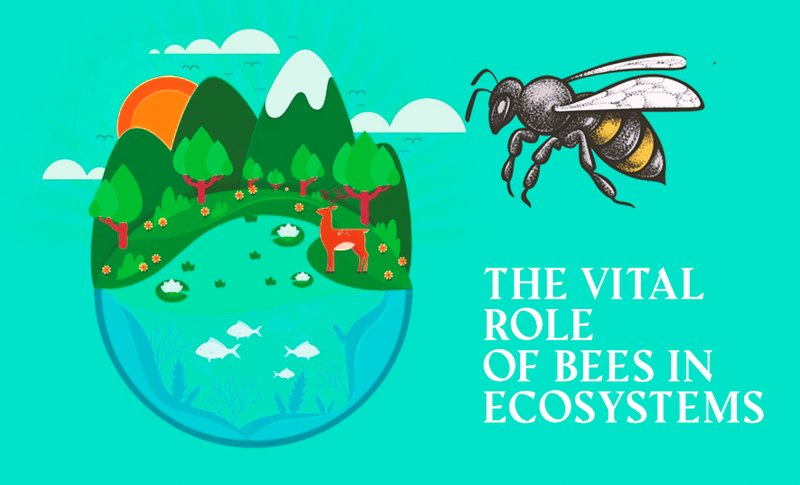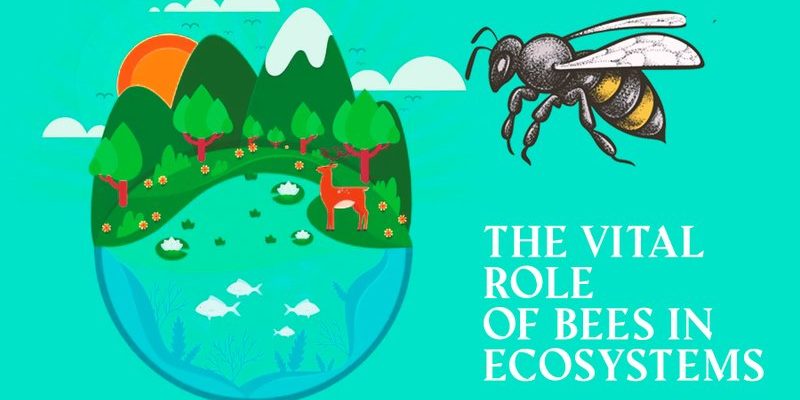
Now, you might be wondering—what exactly do bees do that’s so crucial? Well, let’s dive in and explore their fascinating role in ecosystems. We’ll look at how they pollinate plants, support food webs, and help maintain biodiversity. Spoiler alert: understanding bees might just make you appreciate them a bit more!
How Bees Pollinate Plants
When you think of the word “pollination,” you might picture bees simply transferring pollen from one flower to another, but it’s so much more than that. Pollination is a dance of sorts—a symbiotic relationship between plants and pollinators, especially bees. As bees collect nectar for food, they inadvertently pick up pollen on their bodies. Then, as they visit other flowers, they carry that pollen with them, fertilizing the plants in the process.
This act is crucial for plants to reproduce. Many plants depend on bees and other pollinators for their survival. In fact, it’s estimated that one-third of the food we consume relies on pollination. This includes fruits, vegetables, and nuts. Think about it: without bees, we wouldn’t have apples, blueberries, or even almonds. So, next time you take a bite of your favorite fruit, give a little nod to the bees!
The Process of Pollination
Pollination is an intricate process. Here’s how it typically goes down:
- Attraction: Flowers attract bees through bright colors and sweet scents.
- Visiting: Bees land on flowers to gather nectar, a sweet substance that fuels their energy.
- Pollen Transfer: While collecting nectar, pollen sticks to the bee’s body, which is then transferred to the next flower they visit.
- Fertilization: This leads to fertilization, enabling plants to produce seeds and fruits.
This short sequence might seem simple, but it’s vital to not just plant life but also to the larger food web.
Supporting Biodiversity
Biodiversity refers to the variety of life on Earth, and bees play a significant role in promoting it. When bees pollinate a wide array of plants, they help maintain healthy ecosystems filled with diverse species. A rich mix of plants means a variety of food sources for other animals, supporting entire food webs and ecological interactions.
For example, think about a wildflower meadow. If bees weren’t around to pollinate those flowers, the ecosystem would suffer. Fewer flowers mean fewer seeds, which leads to fewer plants sprouting the next year. This cycle can lead to a lack of food sources for animals that rely on those plants.
In essence, when bees thrive, they help create lively ecosystems that are resilient and adaptable to changes. They are small but mighty contributors to the diversity we see in nature.
Consequences of Declining Bee Populations
Here’s the thing: bee populations are declining at an alarming rate due to factors like habitat loss, pesticide use, and climate change. If this trend continues, we might face serious consequences:
- Reduced Crop Yields: Less pollination means fewer fruits, nuts, and vegetables.
- Threatened Wildlife: Many animals depend on the plants that bees pollinate for survival.
- Increased Food Prices: With lower agricultural output, the prices of food could rise dramatically.
Just think of all the negative ripple effects if bees continue to disappear.
Bees and Food Production
Aside from their ecological role, bees are crucial for food production on a global scale. A whopping 75% of the world’s flowering plants depend on pollinators, particularly bees. This means bees contribute to the production of many staples in our diets.
For instance, crops like tomatoes, cucumbers, and peppers all benefit from bee pollination. Some of the most beloved foods, like chocolate and coffee, also come from plants that rely on bees. Farmers often go to great lengths to ensure that bees are present during blooming seasons, even bringing in hives to their fields.
Now, you might be wondering how sustainable practices relate to this. Many farmers are adopting bee-friendly practices, such as reducing pesticide use and planting cover crops that bloom during off-seasons, to support bee populations. This not only helps bees but also ensures a healthier ecosystem and more reliable crop production.
The Economic Impact of Bees
The economic value of bees is staggering. Studies suggest that bee pollination contributes over $15 billion to U.S. agriculture alone. With such a high stake, preserving bee populations is vital for food security and economic stability. Farmers who invest in bee-friendly practices often see increases in crop yield, which means more profit in their pockets and healthier food in our markets.
Knowing this, it becomes clear how interconnected our food systems are. Protecting bees isn’t just a feel-good effort; it’s an economic necessity.
The Interconnectedness of Bees and Other Species
Bees don’t work alone. They’re a crucial part of a much larger system. For example, when bees pollinate flowers, they also create habitats for other species. A flower-filled area supports not just bees but birds, butterflies, and a multitude of other insects.
Take a moment to picture a vibrant garden buzzing with activity. Each bee, bird, and insect plays its part in creating a balanced ecosystem. When one species thrives, it often supports many others. If bees decline, this delicate balance can tilt, leading to the decline of other species that depend on the same environment.
Habitat Loss and Its Impact
Unfortunately, as urban areas expand and natural habitats are converted for agriculture, bees lose their homes. According to the World Wildlife Fund, habitat loss is one of the leading causes of declining bee populations. Conservation efforts like creating bee habitats in urban areas can help counteract this trend.
Planting native flowers, creating bee hotels, and maintaining gardens that bloom throughout the seasons can foster a welcoming environment for these vital pollinators. Even small actions can help support their populations and, in turn, many other species.
How You Can Help Bees
You might be wondering, “How can I make a difference for bees?” The good news is there are plenty of ways, and even small actions can contribute to their survival. Here are a few helpful tips:
- Plant a Bee Garden: Choose native plants that bloom at different times throughout the year to provide a continuous food source.
- Avoid Pesticides: Opt for natural pest control methods that won’t harm bees.
- Educate Others: Share what you’ve learned about bees and their importance to encourage others to take action.
By creating a bee-friendly environment, you’re not only helping their populations but also supporting the ecosystem as a whole.
Community Initiatives
Join or support community efforts that aim to protect and promote bee populations! Many groups organize events like “bee walks” or “pollinator gardens” to raise awareness and engage locals. By participating, you’re making a collective impact while learning more about the bees buzzing around you.
The role of bees in ecosystems is nothing short of awe-inspiring. From pollinating our favorite fruits to supporting biodiversity, these little creatures are fundamental to the health of our planet. As their populations decline, understanding their importance becomes even more critical.
Whether it’s planting a garden or minimizing pesticide use, every effort counts. By working together to create a supportive environment for bees, we help ensure a thriving ecosystem for ourselves and future generations. So next time you see a bee buzzing by, remember—they’re not just insects; they’re vital players in the dance of life.

